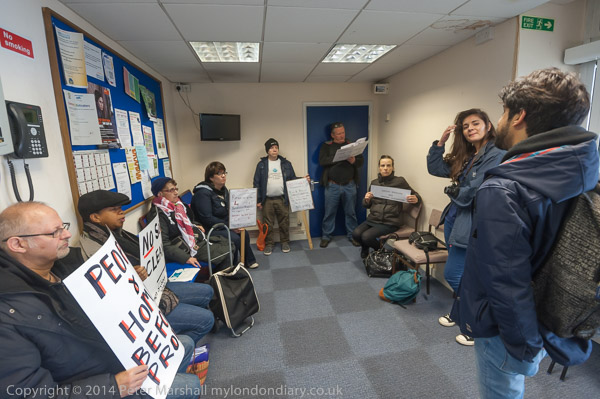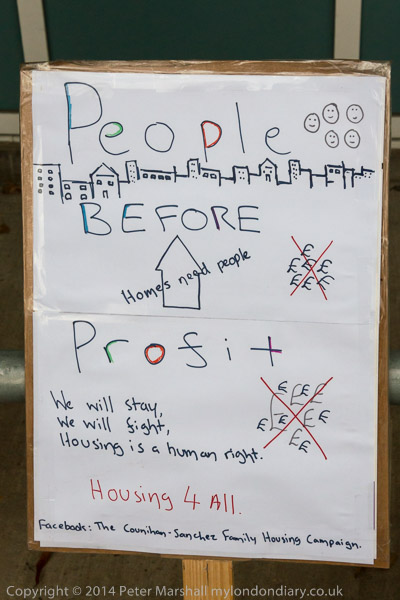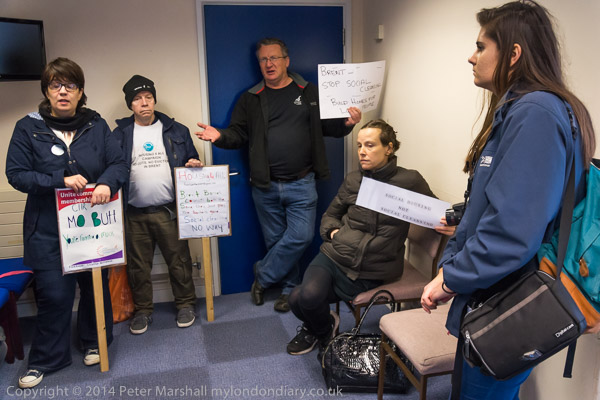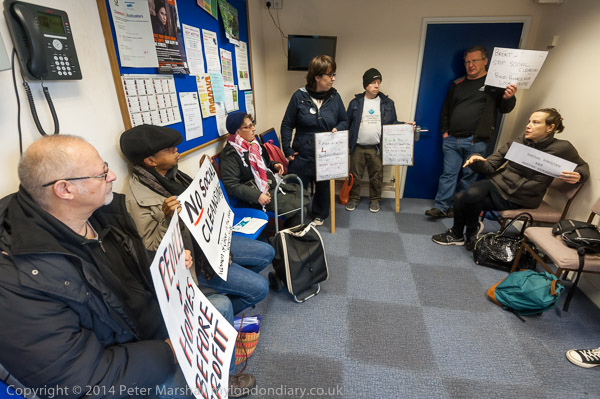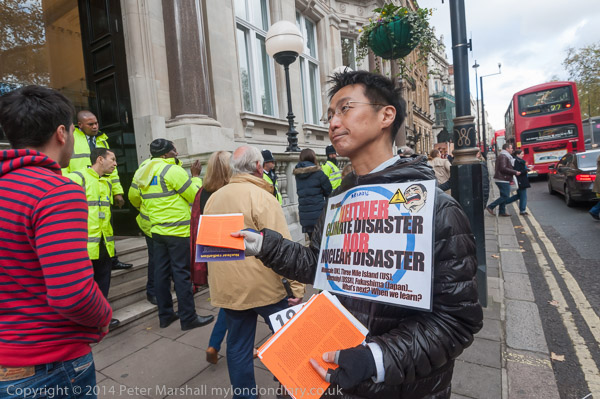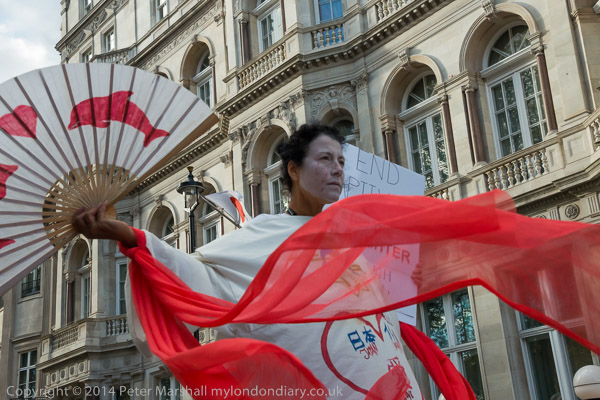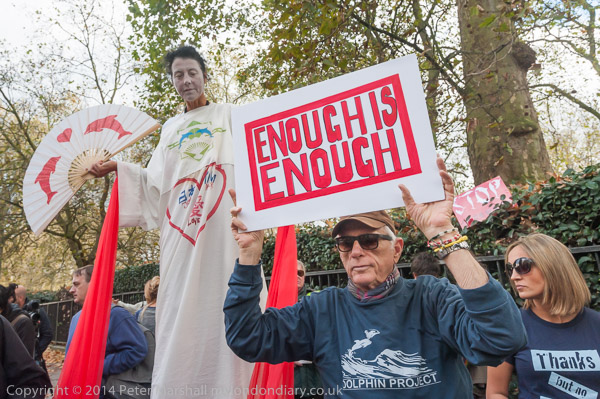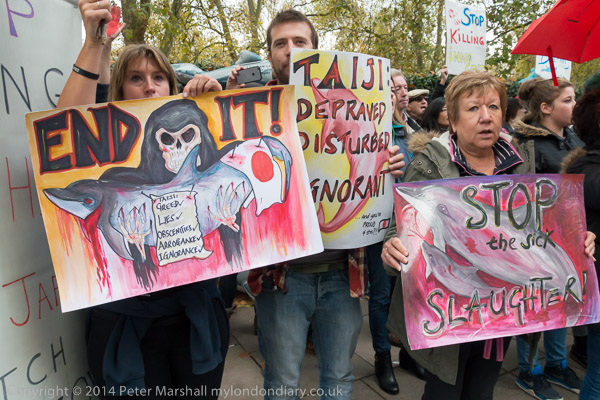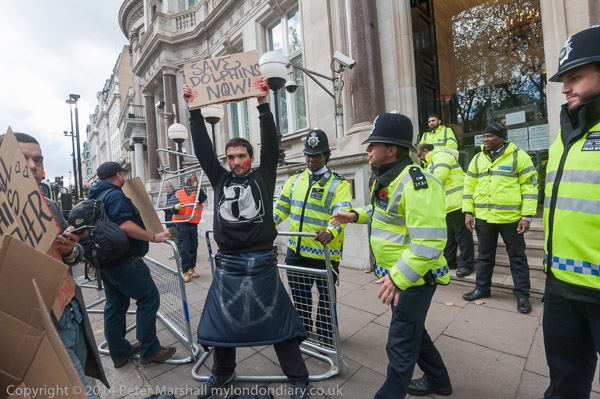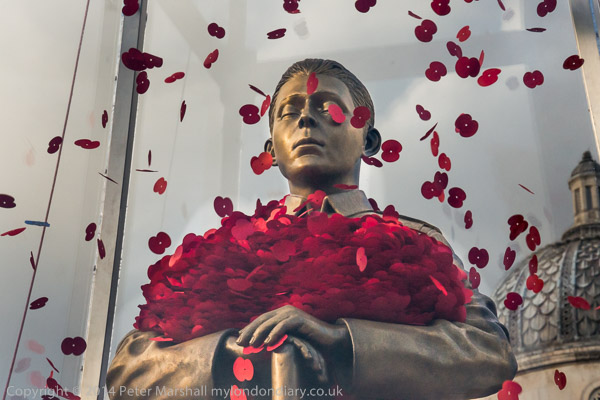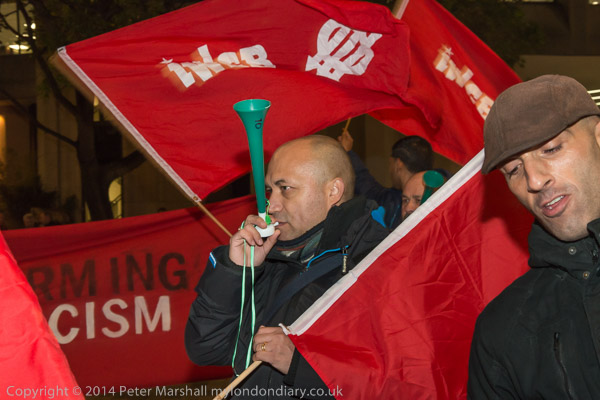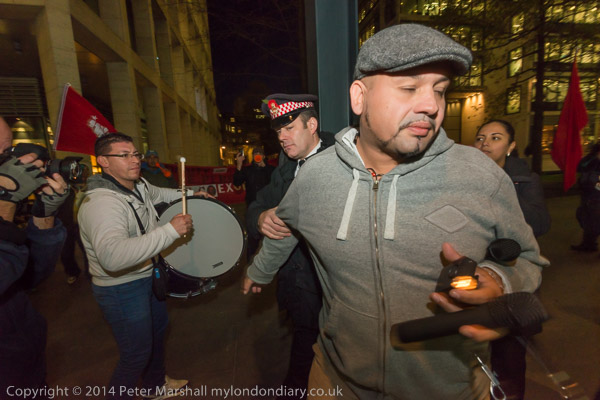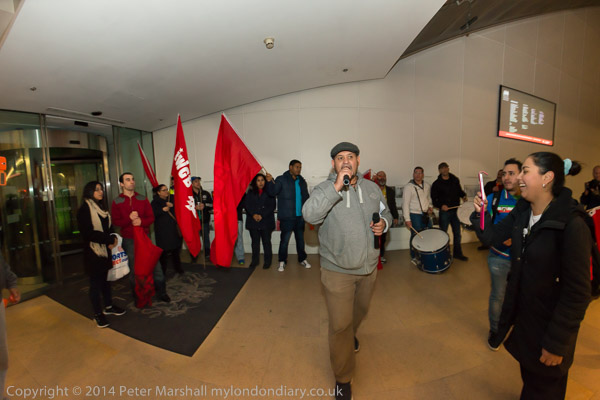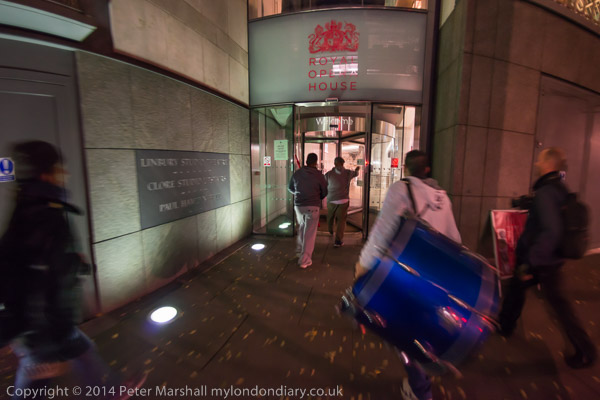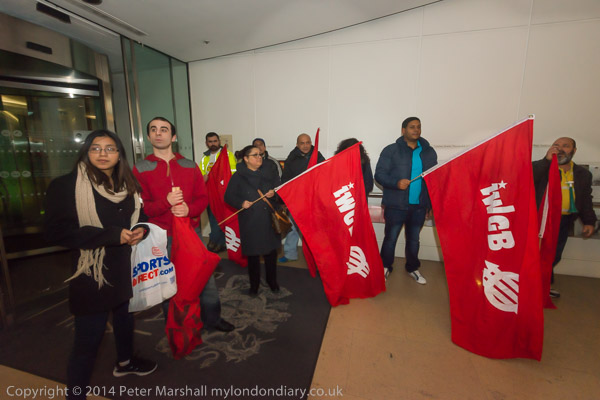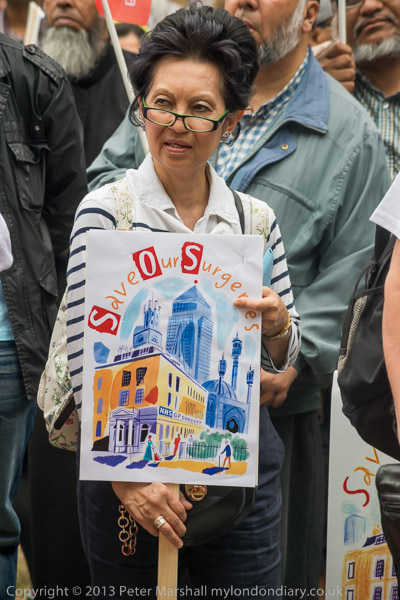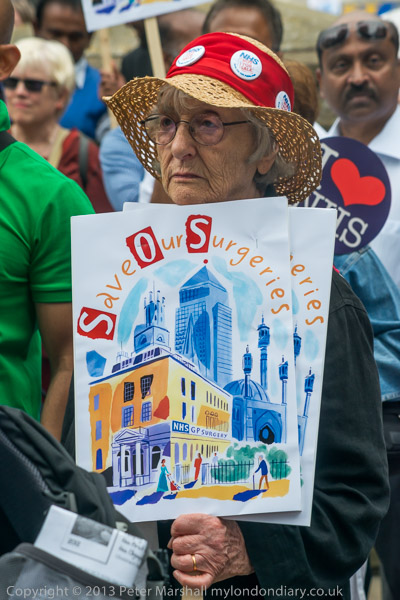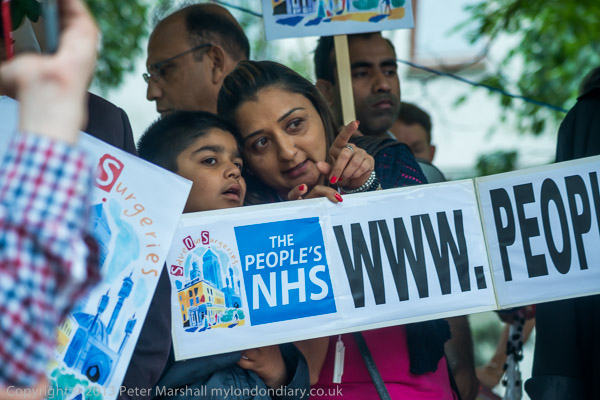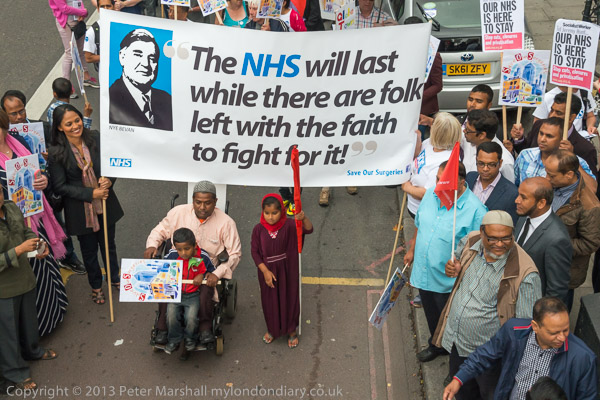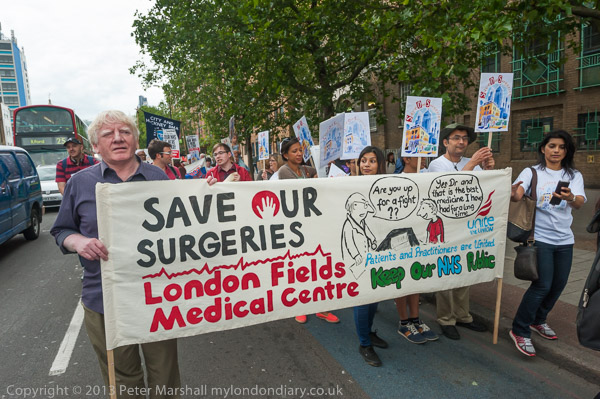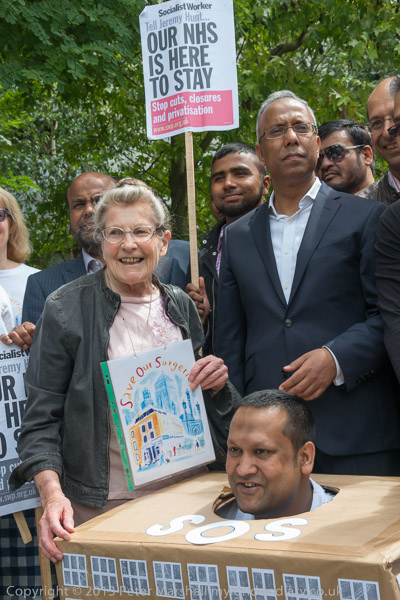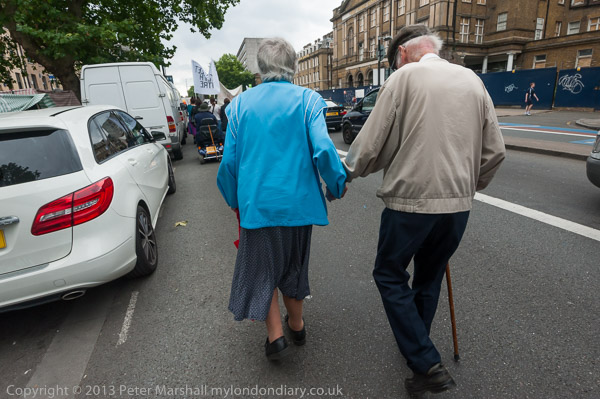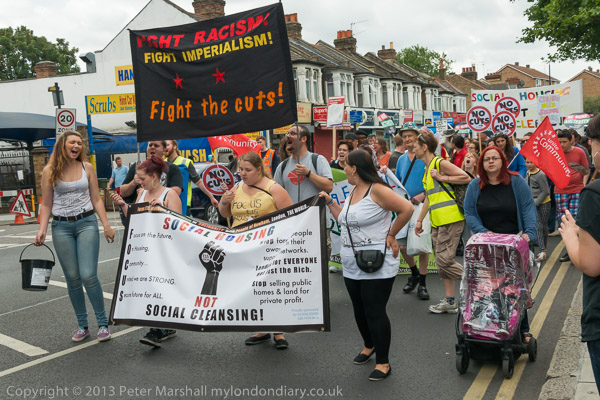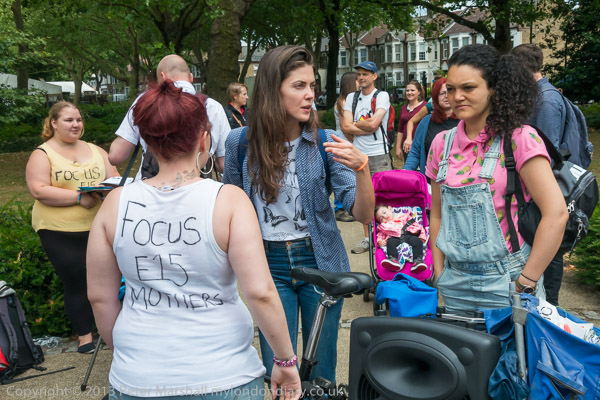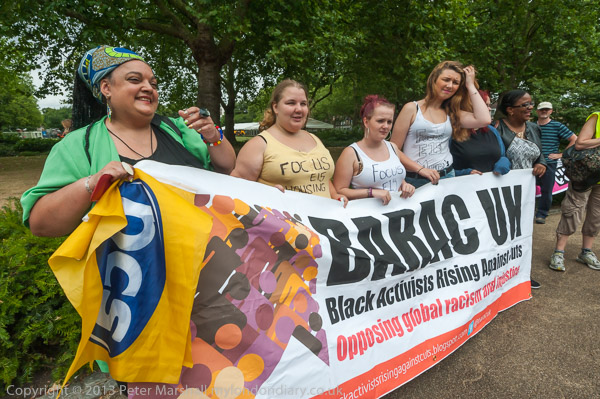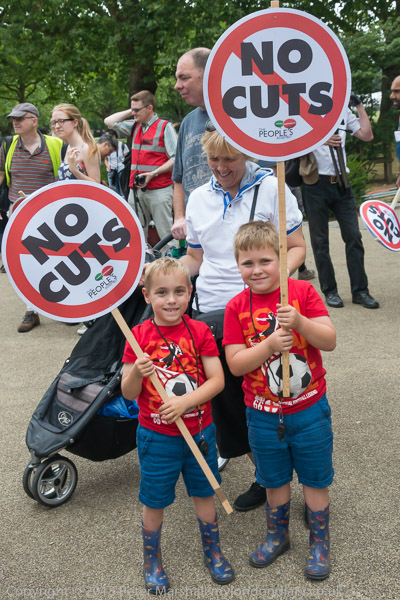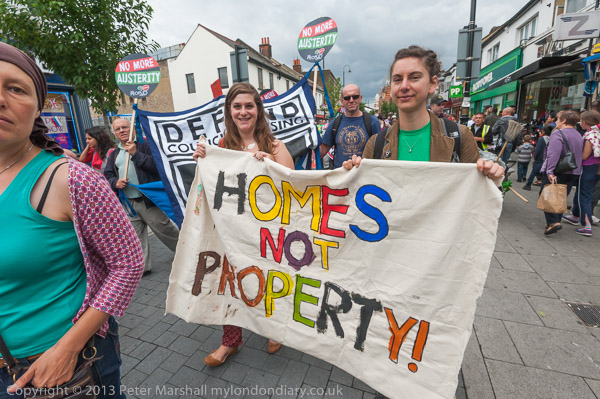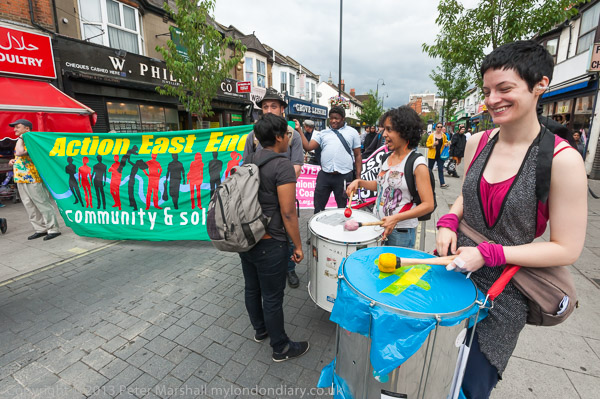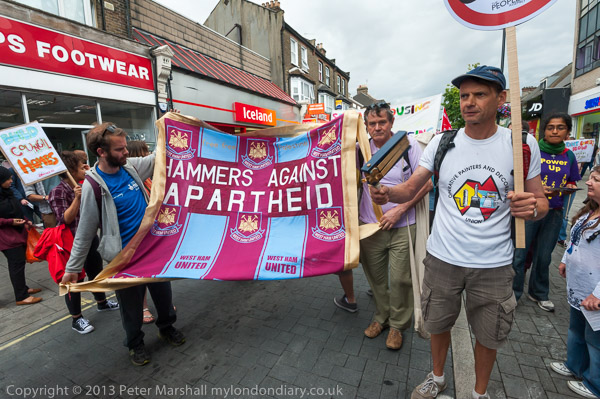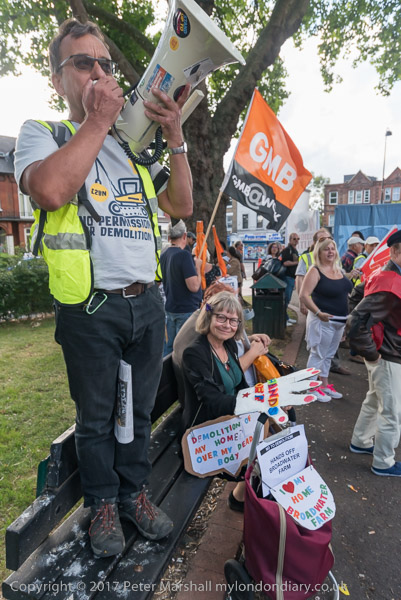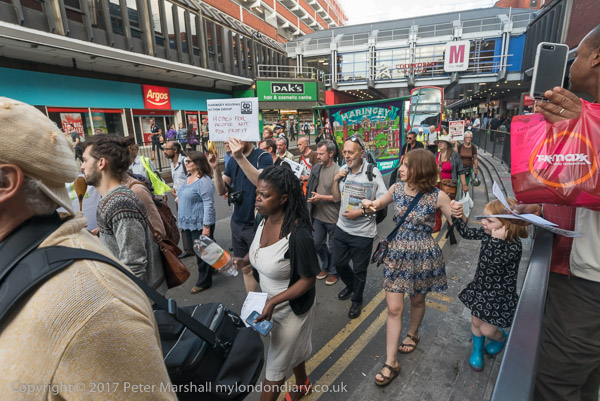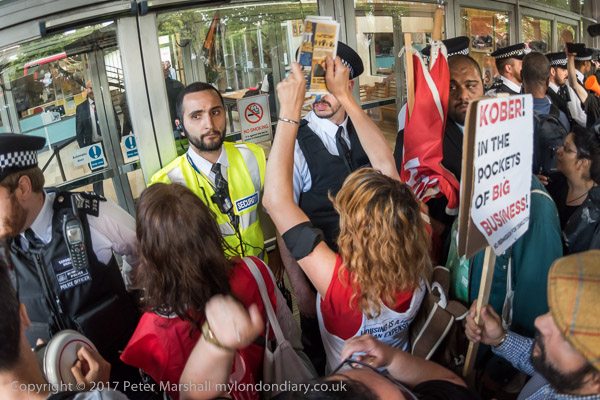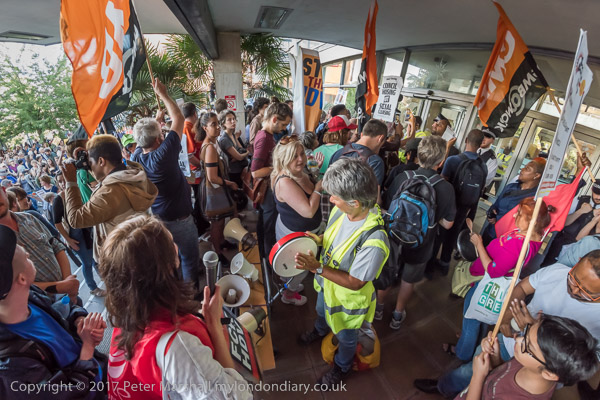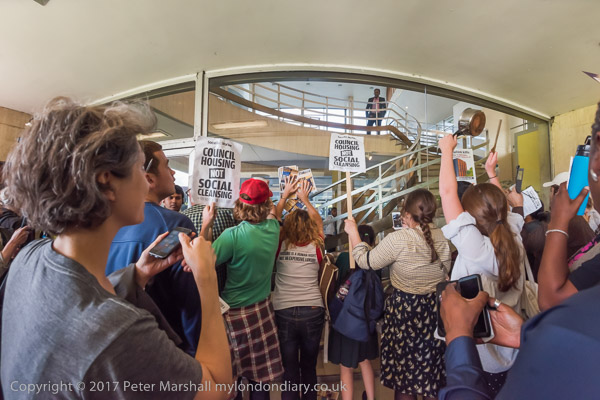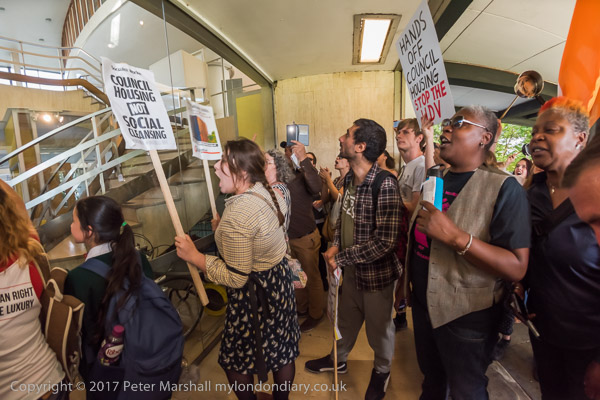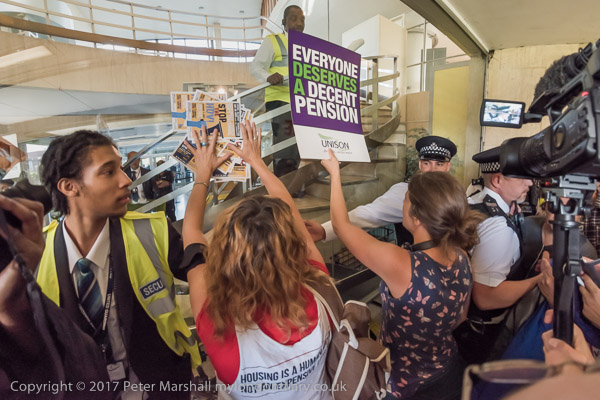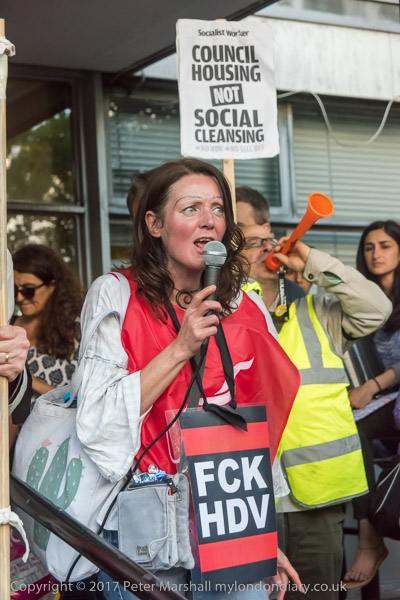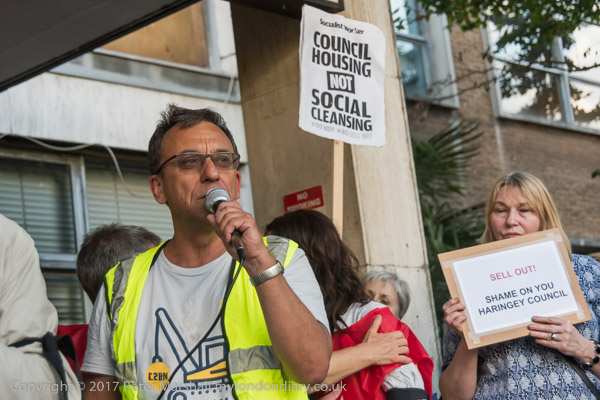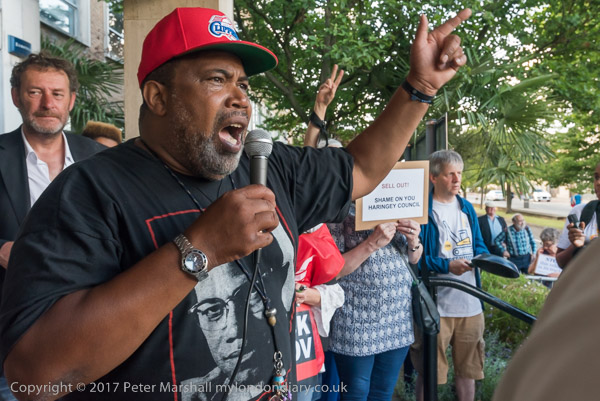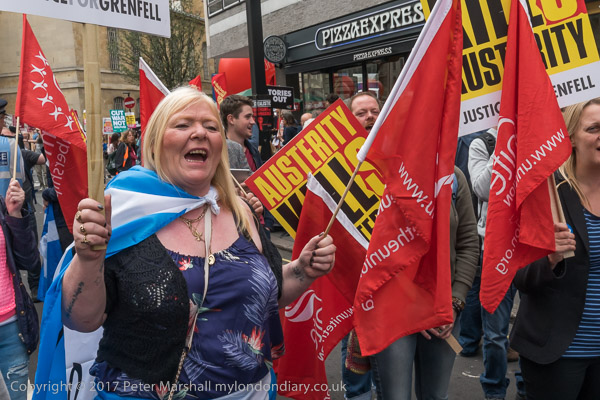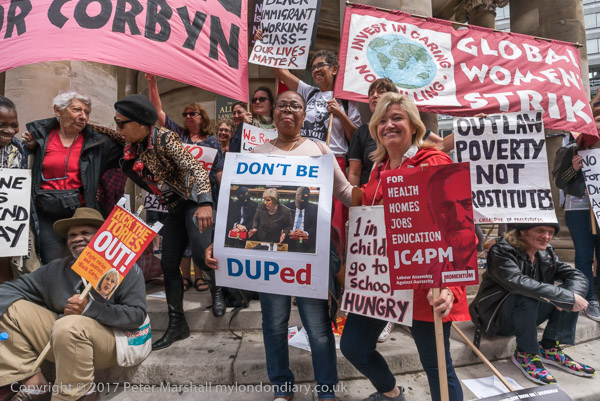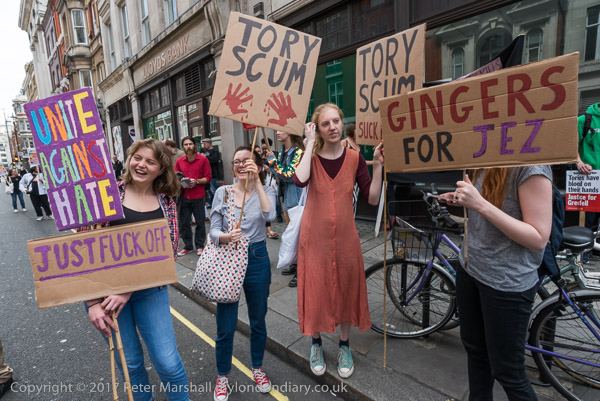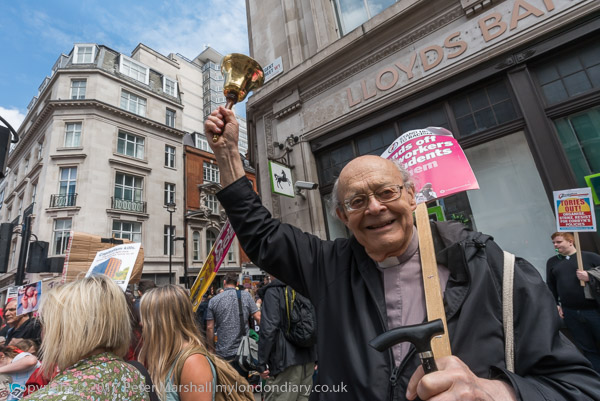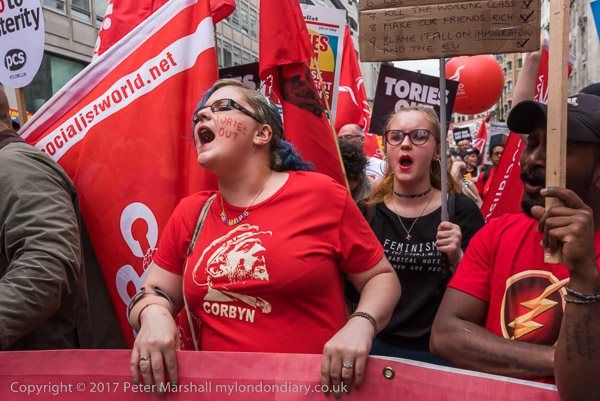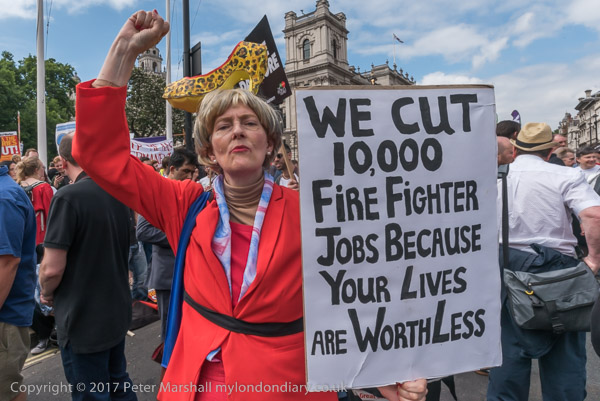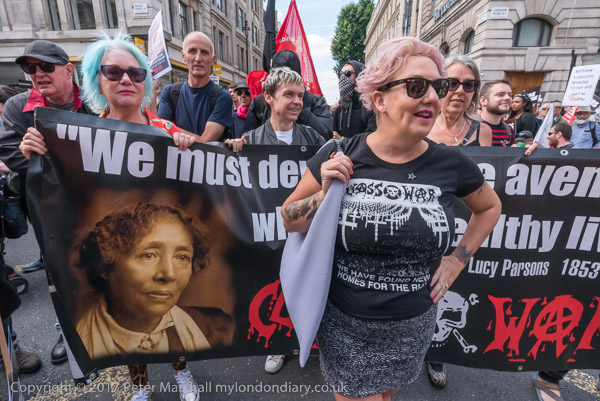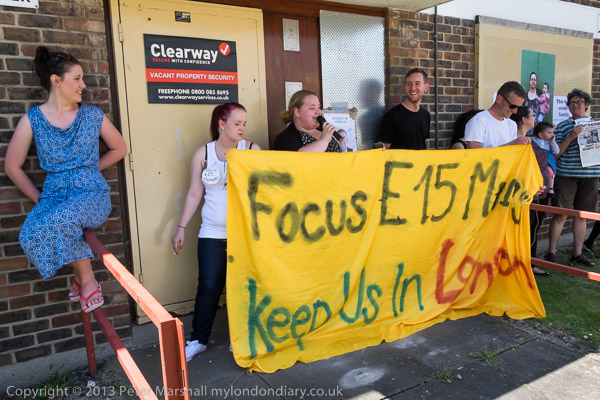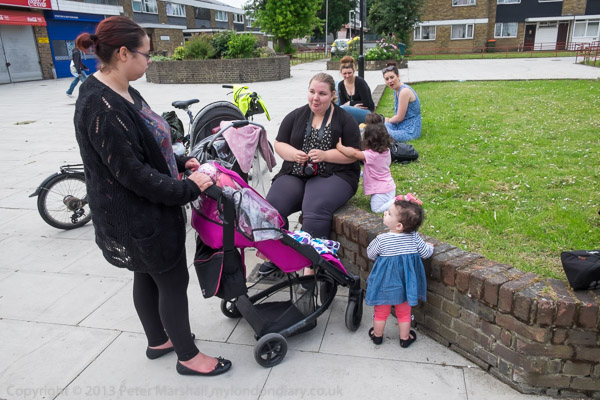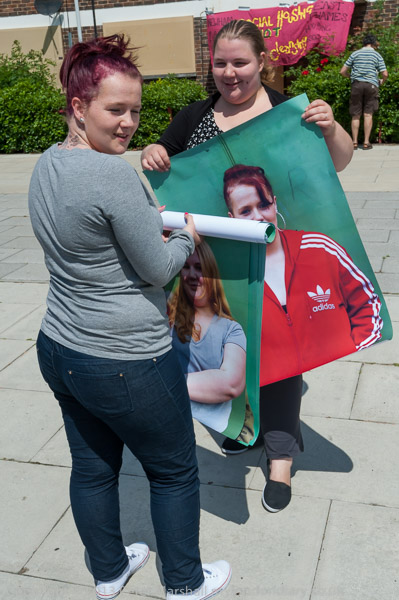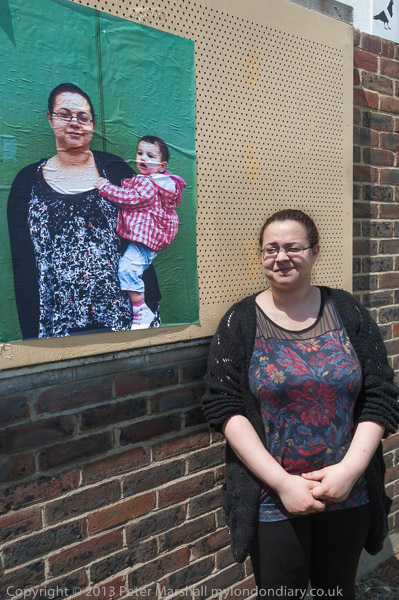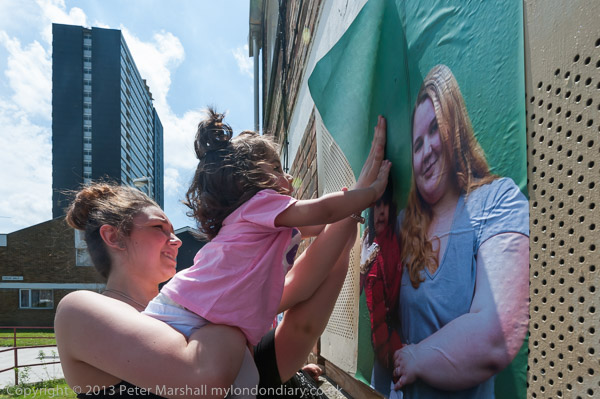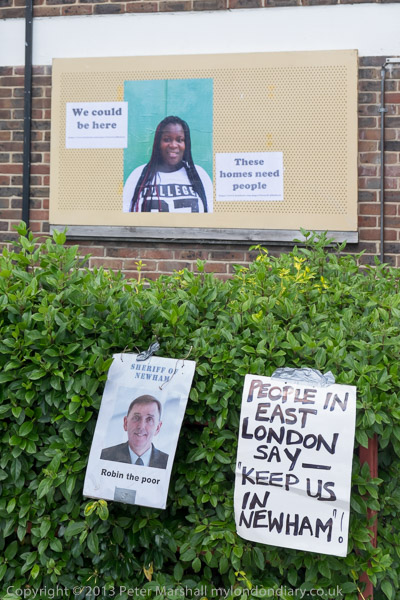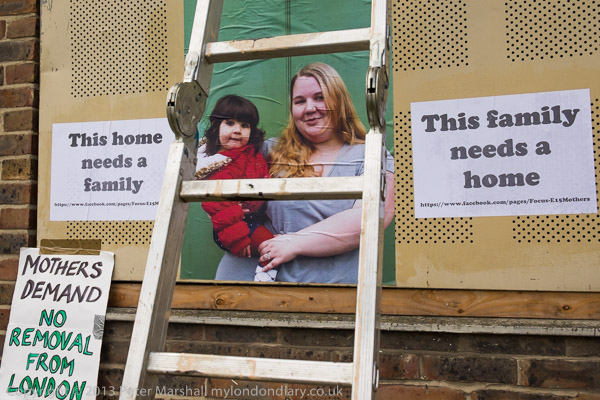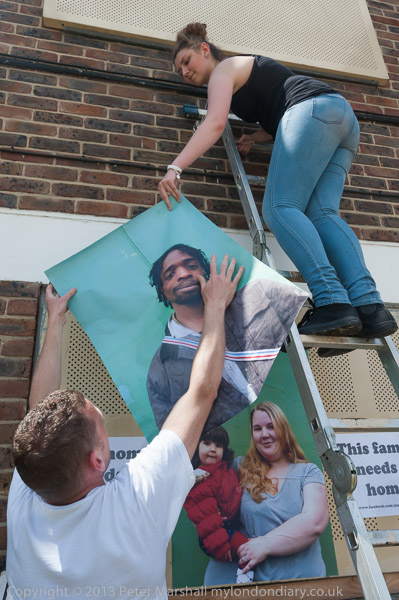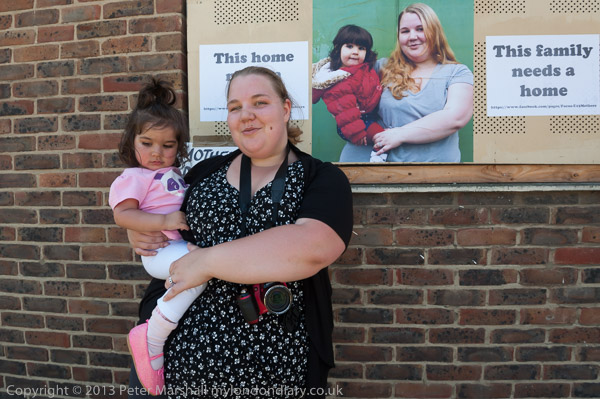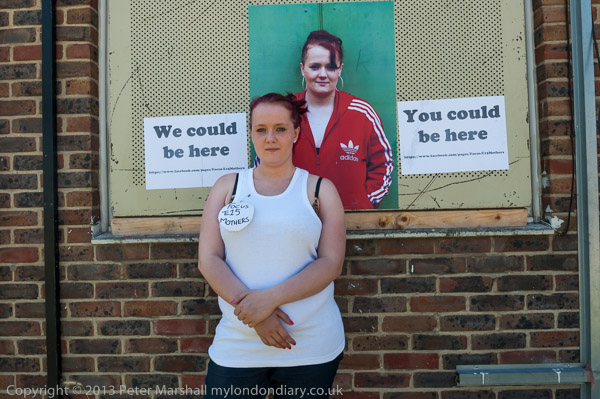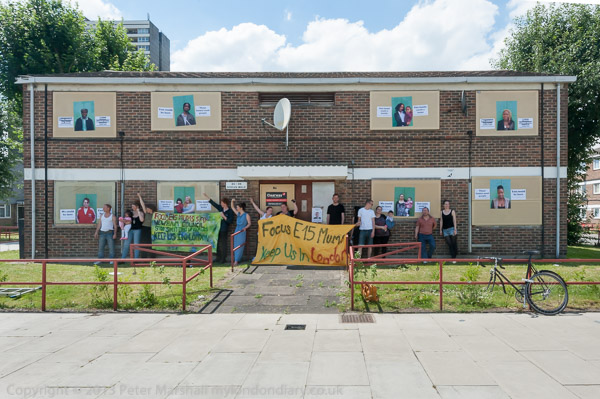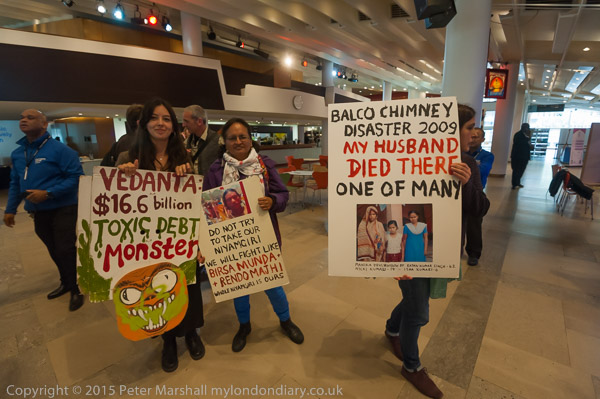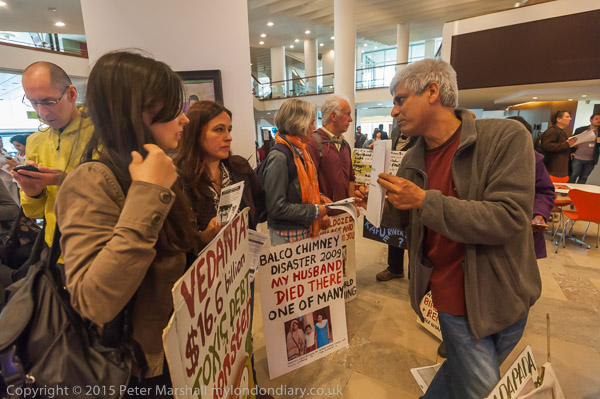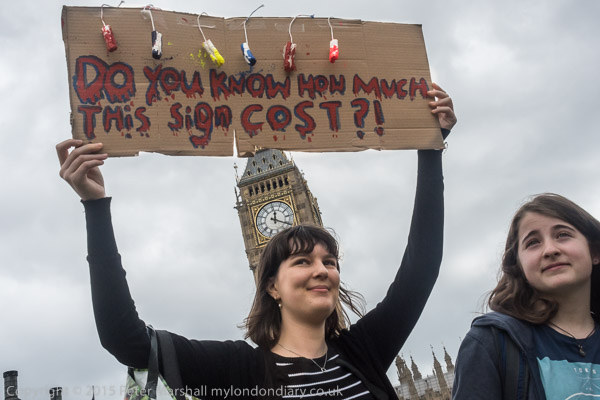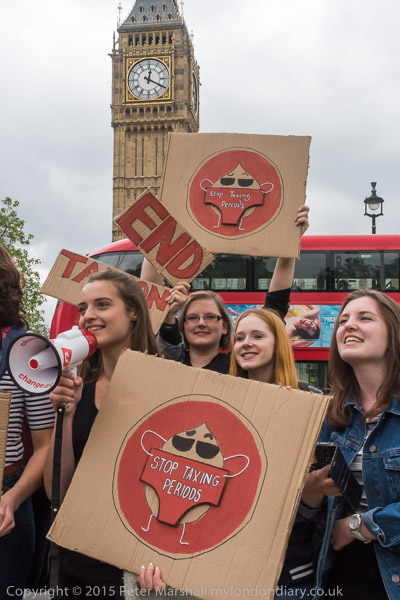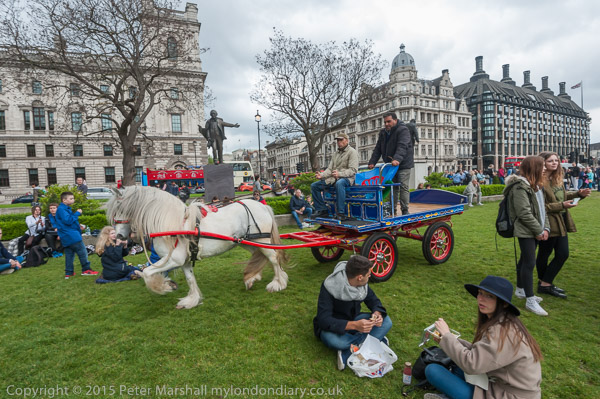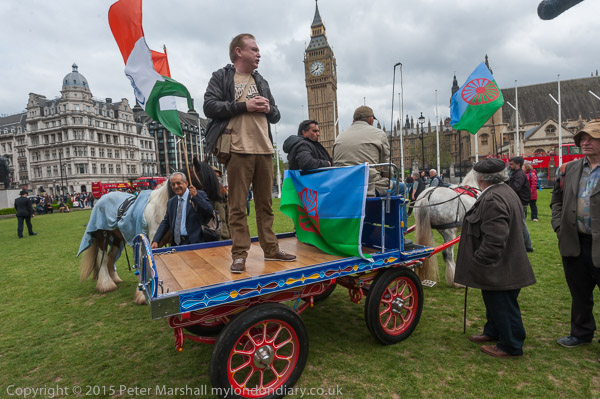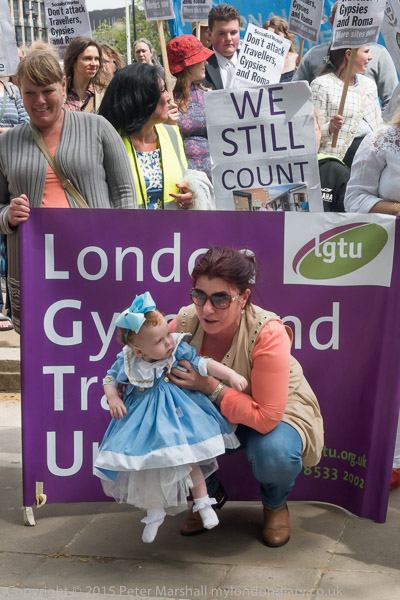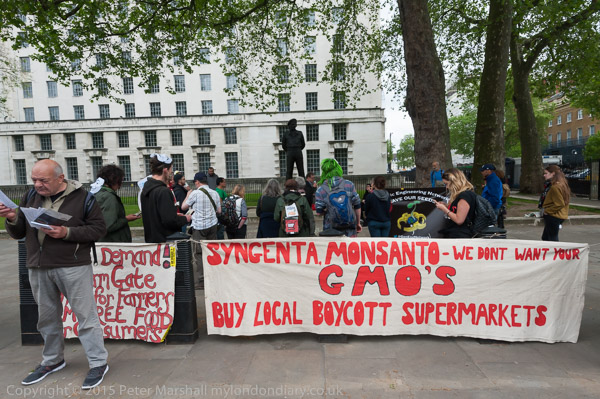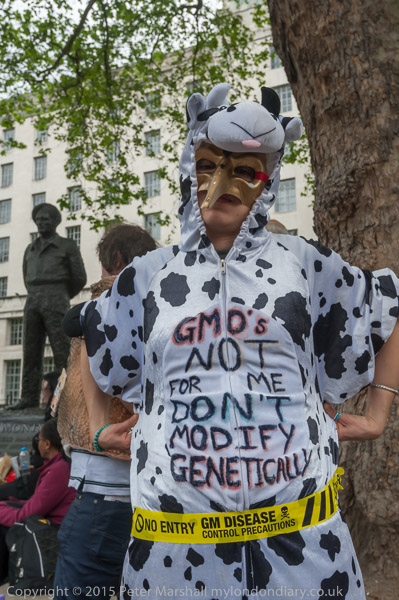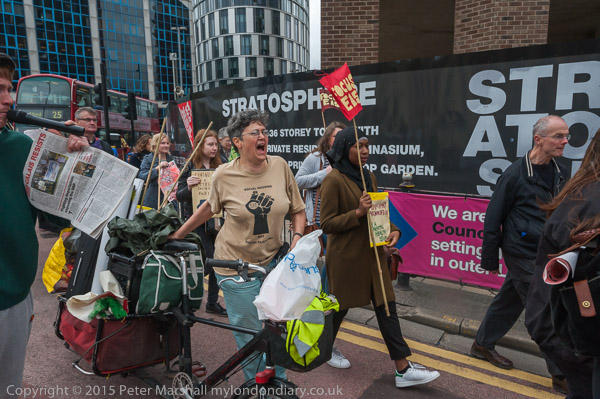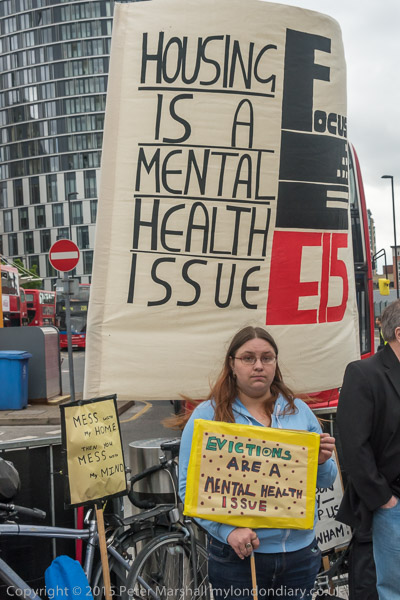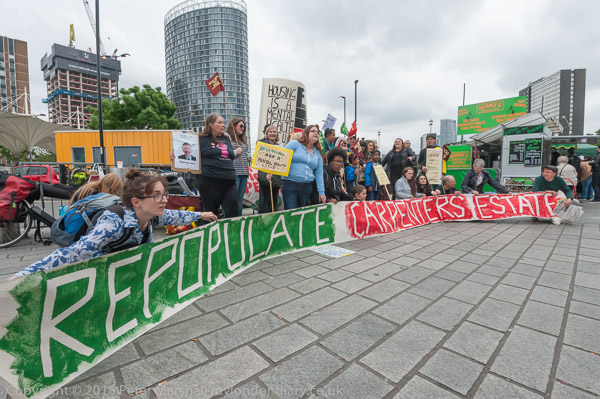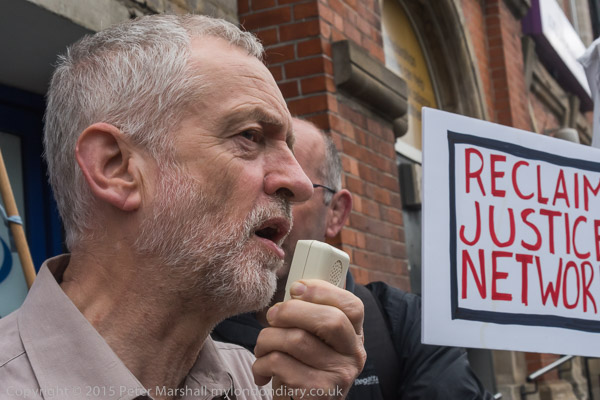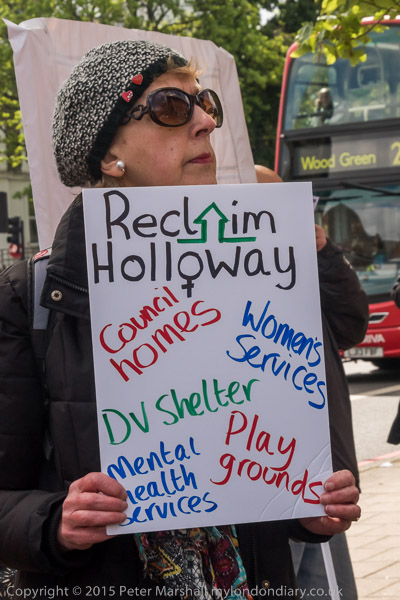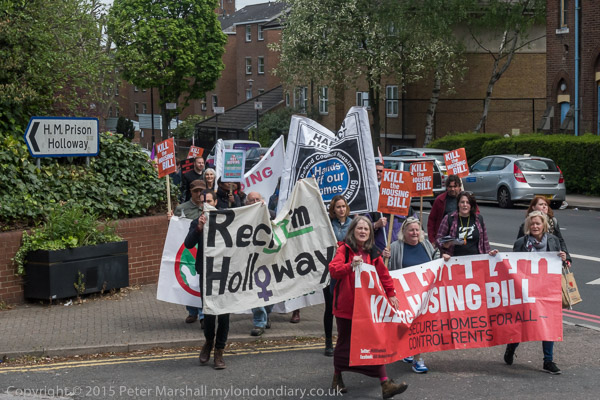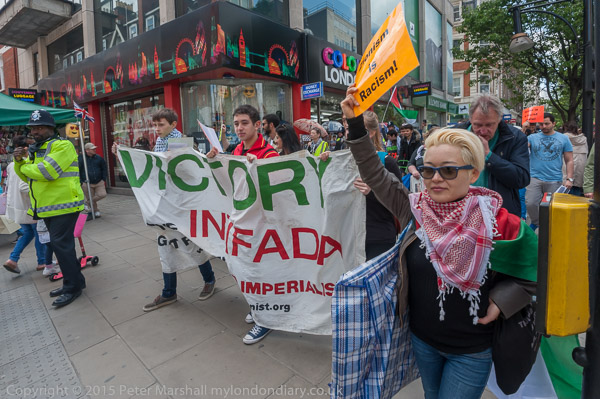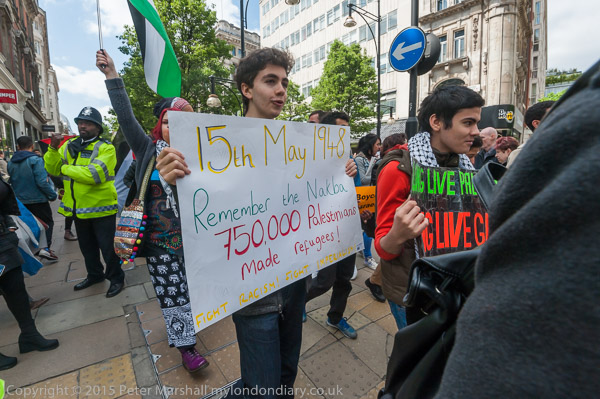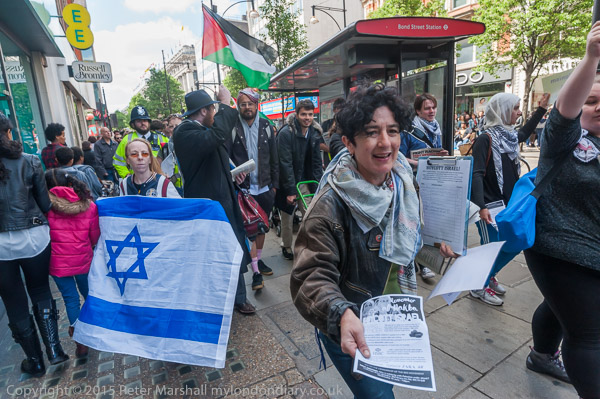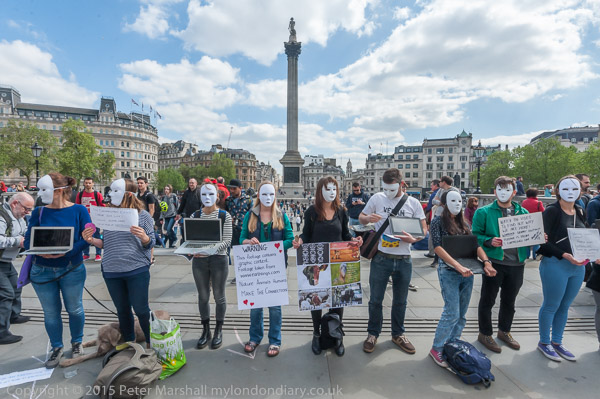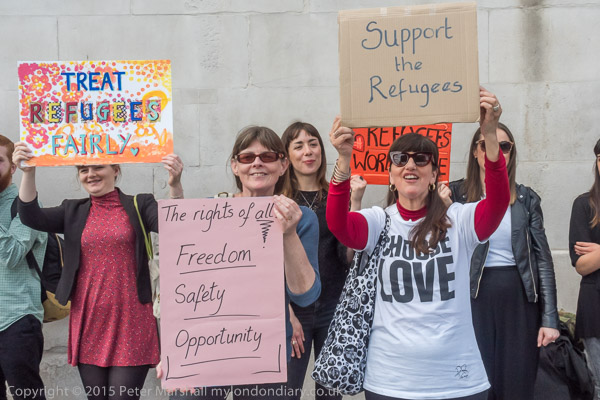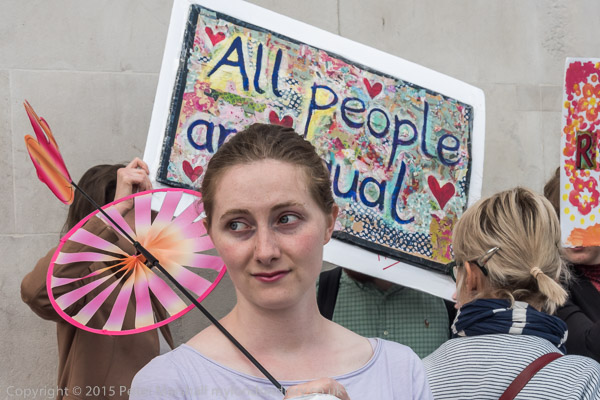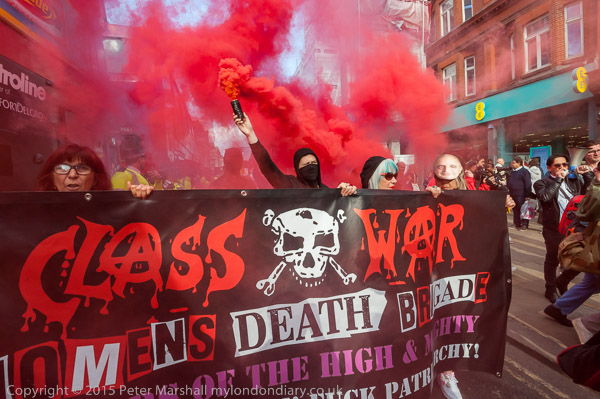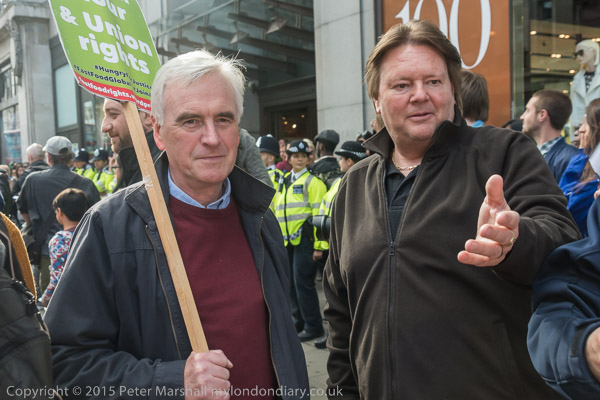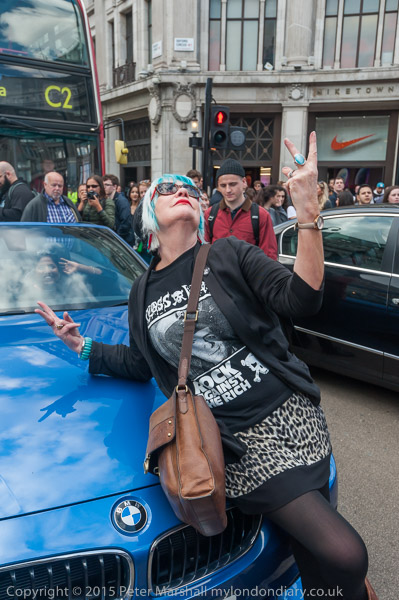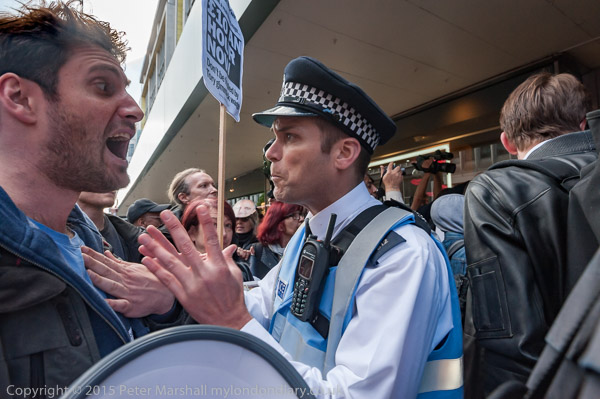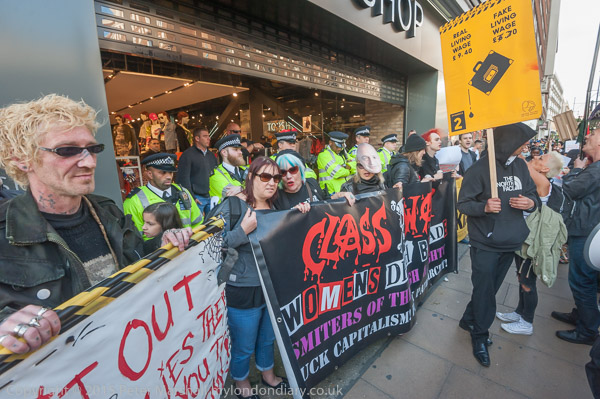More pictures from my walk on 27th January 1989. The previous post on this walk is St George’s Tavern and North Peckham 1989
Robert Browning the Victorian poet (1812-89) was born in Rainbow Cottage, Cottage Green and grew up in the area – there is a Rainbow Street not far away but the cottage is long gone. But the area still felt a little out of place in the middle of twentieth century London.
The tree is still there on the corner with Wells Way and so too is the chapel down the street and the house beyond on the corner of Southampton Way. At right the brick wall and fence remain, but the site behind, not visible here, has been sold for development. I’m not sure why the foreground railings on the pavement edge were there, but they are now no longer. At left instead of the corrugated iron there is now housing almost up to the pavement and the 11 storey block facing the end of the street has been replaced by flats of half the height.
Browning’s parents – his father was a clerk at the Bank of England on what was for the time a pretty decent salary – moved a few yards to Hanover Cottage on Coleman Rd when he was around 12, and there is a more or less illegible stone plaque on a wall of the shop on the corner of Southampton Way and Coleman Road with a more recent Southwark blue plaque higher up.
The chapel was built in 1844 and became a Baptist chapel ten years later in 1854. Owned by the Copleston Centre, a Peckham Community Church in Copleston Road it has been in use as a Christian nursery, the Destiny Day Nursery registered in 2007.
When I took this picture is still in use as a Baptist chapel. The commercial building beyond the chapel is still there as is the brick building at left, though the fences have been replace by a low brick structure, perhaps a bin store.
A second picture gives a clearer view of the church noticeboard with its message ‘SUNDAY FAMILY SERVICE 11.00AM’. I would like to know more about the windowless building to the right.
The houses at 73-77 were built in the early 19th century and are Grade II listed. A planning application was made in 2021 for the development of the yard which has an ‘L’ shape behind the houses on Southampton Way to another entrance on Cottage Green, opposite the chapel and next to another listed building, Collingwood House at 1-3 College Green – which I did not photograph.
I think these houses are near Brunswick Park, but cannot identify the exact location. There are a number of houses of a similar mid-Victorian age and style in the area which was developed by W J Hudson who bought the area in 1847, naming the open space in the centre after the estranged wife of George IV, Caroline of Brunswick. Long separated from her husband she had become a very popular figure by the time he became king in 1820 and died (possibly not naturally) shortly after his coronation in 1821.
The garden at the centre of the square was bought by the Metropolitan Borough of Camberwell in 1901 and opened to the public as a park in 1907.
Finding the exact location of photographs I took 33 years ago is much easier when they include street names as this picture of houses on the corner of Brunswick Park does. Princess Caroline of Brunswick-Wolfenbüttel was the daughter of George III’s sister and had a surprising introduction to this country as she first landed at Greenwich at what was then the Royal Hospital for Seamen and asked “Are all Englishman missing an arm or a leg?“
The future George IV married her for her money and for the need to provide the country with an heir. She was “short, fat, ugly and never changed her undergarments, and rarely washed. Her body odour was overwhelming.” George had already made a secret and illegal marriage to the beautiful but Roman Catholic Maria Fitzherbert around ten years earlier, but as he had not had his father’s consent for this, the second marriage was not bigamous. Both George and Caroline got very drunk at their wedding and somehow despite their mutual repulsion a daughter and heir Princess Charlotte was born the following year.
The couple separated shortly after. George made a number of unsuccessful attempt to divorce her, including setting up a Royal Commission called the ‘Delicate Investigation’ which failed to find evidence of adultery, possibly because their heart wasn’t really in it, perhaps due to the overwhelming evidence against George.
Caroline left Britain in 1814 for Europe, shocking people in various countries by her behaviour (which included often appearing in public with her dress open to the waist, dancing topless in Geneva and becoming the mistress among others of Napoleon’s brother-in-law.)
When George became king in 1820 as they were still married she was automatically queen consort and decided to return to Britain. The government tried to bribe her, offering her £50,000 to stay away, but she came back and set up house in Hammersmith. She was very popular with the public (at a distance) many of whom were disgusted by her husband’s immoral behaviour, both towards her and with his various mistresses. A mob surrounded Parliament daily when the House of Lords tried for over 7 weeks to dissolve her marriage, eventually forcing them to abandon the attempt.
Uninvited, she tried to attend George IV’s coronation in 1821, but had the door of Westminster Abbey slammed in her face. She died 19 days later, convinced she had been poisoned. It seems more than likely this was so.
St Giles Hospital was opened in 1875 as the Camberwell Workhouse Infirmary and blocks were added here on St Giles Rd (then Brunswick Rd) around 1900. In 1913 it became the Camberwell Parish Infirmary and in 1930 it was taken over by the London County Council. On joining the NHS in 1948 it became St Giles’ Hospital. It closed in 1983 and the blocks here were converted into flats.
Another picture from the four I made of the former hospital in St Giles Road on the east side of Brunswick Park. I walked down the road back to Peckham Road, where my walk will continue in a later post.
My posts on this walk on 27th January 1989 began at St George’s, Camberwell, Absolutely Board & Alberto.








